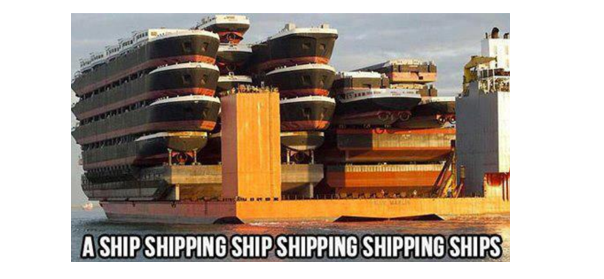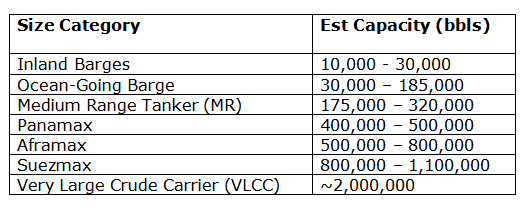RL Blogs

By Miles Hoyer
Mar 25, 2020A summary explanation of key Shipping basics that every refiner should know. |
||||||
| While railcars and trucks have increased as methods of shipping oil in the last few years, waterborne refineries continue to find barges and tankers as efficient means to balance supply and demand.
The discussion below walks through some commonly discussed shipping considerations to help refinery coordination, supply and trading teams increase fluency in marine management.
Right Size Your Fleet
Chartering
The act of hiring a ship or barge to carry cargo is called chartering. There are four types of charter agreements:
Size
Certain delivery points and dock limitations (ie. draft, loading arms, berth length) may require refiners or traders to tailor with the proper size barges and tankers. Therefore, key to vet vessel clearances prior to committing to any charter agreement.
Estimated carrying capacity is a function of draft and deadweight tonnage (DWT). A guideline summary of each class vessel is listed below.
Cargo segregation
For refiners with tank limitations and or loading constraints, cargo segregation can add flexibility in optimizing fit for purpose movements. Also, certain charter agreements allow charterer to operate tanker or barge to move a mix of clean and dirty products. Always ask about the last 3 cargoes loaded prior to chartering to not risk product contamination or save on tank cleaning costs and time.
Define Your Costs
Understand Freight Rate & Demurrage
What is Freight Rate?
The freight rate of a tanker charter party is presented in one of four ways:
In more relatable terms, freight rate covers three major vessel cost categories: voyage costs, capital costs and operational costs. The charter party specifies whether ship owner or charterer bears each cost.
What Influences Freight Rate?
Jones Act Both Capital and Operational costs are generally impacted by flag or registry for non US-trading ships. Noteworthy to our US refiners, is Jones Act, a United States federal statute that requires US flag ship to move all goods between US ports. This requirement has raised the cost of US shipping relative to its non-US flag ships by 2 - 3 times over the recent years.
Market Availability With a constantly changing global crude oil supply and demand along with more stringent regulations and emission standards, the tanker market is highly volatile. More and more ship owners are monitoring market trends and positioning tankers in favor of locations with maximum backhaul opportunities to help reduce cost. Therefore, spot market availability can become a challenge and refiners need to balance spot vs. term charter decisions carefully.
Relationships Matter Consolidators, customs brokers, freight forwarders, and NVOCC’s can be a factor in determining freight rate because of their experience, business relationships, and the volume at which they operate. These factors can help keep freight rate down.
What is Demurrage?
Demurrage is additional cost to charterer if loading or discharge of goods exceeds that of agreed chartered time window. Demurrage rate is typically defined on a dollar per day basis in the charter party. Though demurrage fees cannot be expected to disappear, it is sometimes used as a benchmark to assess supply chain deficiencies.
Vessel shipping costs will easily cost refiners Tens to Hundreds of Millions of dollars a year. By increasing the fluency of marine management, refiners can maximize wharf utilization, increase revenue generation, and perhaps provide supply to new markets. | ||||||
|
|










